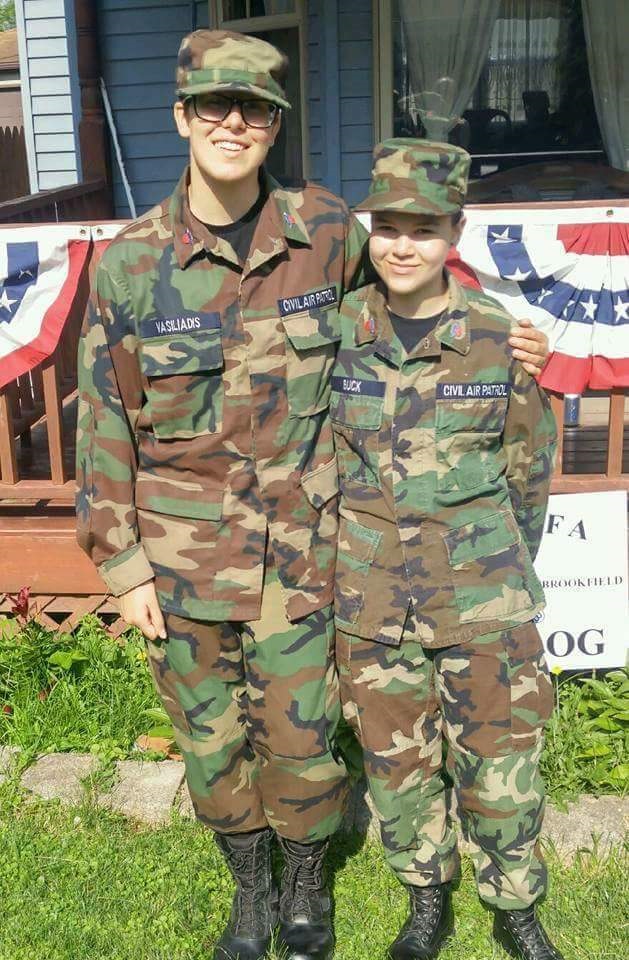Students chart future path through Civil Air Patrol
February 27, 2018

This article originally appeared in the February 14, 2018 issue of The Clarion.
It’s no secret that RB offers a cornucopia of clubs and extracurriculars. Look beyond the school’s activities, however, and become acquainted with the Civil Air Patrol (CAP), an outside-of-school service opportunity growing in popularity among high school students. CAP is a an American service organization geared towards performing public emergency duties as necessary. Since its formation during World War II, CAP is now comprised of over 58,000 members who provide daily for state and local agencies in times of crises, like their immediate responses in the wake of the September 11th attacks.
Opportunities to be involved in CAP here at RBHS are aplenty; current members periodically come to RB to recruit high school students for the program, which runs outside of the school day to allow for students from surrounding schools to meet each other. RB Sophomore Evelyn Buck was one of the few who expressed interest this past year.
“I became involved with the Civil Air Patrol in May 2017 after two cadets from my [now] squadron came to RBHS to recruit…I [was] first interested in the emergency services aspect and how we can start helping our communities as high school students rather than waiting to enlist,” said Buck.
Their mission statement, “Supporting America’s communities with emergency response, diverse aviation and ground services, youth development and promotion of air, space and cyber power,” holds true to the organization’s core principles. Fellow sophomore Alexis Vasiliadis also joined in May under the same conditions that prompted Buck.
“In the Civil Air Patrol, a U.S. Air Force Auxiliary, we have three main missions: aerospace education, emergency services, and leadership,” said Vasiliadis. “Although the cadet age range is from 13 to 21 years old, there is an option for anyone older to become a senior member. They basically help administer the squadron and allow guidance.”
Aside from the big projects CAP manages, it was initially the small, community emergency contributions that piqued Vasiliadis’ interest. Now, after being involved for almost a year, her interests have expanded to some of the more elaborate areas of CAP.
“After attending meetings since May of 2017, aerospace has become far more fascinating to me. The classes are interesting and I’m determined to find out more after every one of them,” said Vasiliadis.
Involvement in CAP has the added benefits of promoting growth in key social areas through increased responsibility and leadership opportunities. The tradeoff is well worth it, Vasiliadis says of her position.
“Being a Non-Commissioned Officer (NCO), my responsibilities consist of being a good example to newer cadets, teaching classes, leading drill, and much more,” said Vasiliadis. “I’ve never been put in a leadership role like that before joining CAP, but I’m thankful that they were able to take me out of my comfort zone in order for me to grow.”
Similarly, Buck appreciates the freedom to interact with her team and unite to achieve a common goal. Her fervor is no doubt a part of what helped her fly through the ranks in just under a year.
“Now that I’ve been involved with CAP for almost a year now, I love being able to organize events, help my fellow cadets, and work together as a team to accomplish a mission. I joined CAP in May 2017 and since have become an NCO, flight sergeant, and the recruiting and retentions officer for my squadron,” said Buck.
Now with nearly 25,100 cadets and 33,761 senior members, CAP’s legacy is ever-growing. On December 10, 2014, the Congressional Gold Medal was presented to the nearly 200,000 World War II CAP members who served. According to the Civil Air Patrol’s website, many participants go on to pursue careers in science and aviation.
“After high school, I’d like to become a pilot, whether it’s private or commercial, along with joining the military. Being involved with CAP allows cadets who reach the Mitchell Award the opportunity to enlist as an E-3 in the air force,” said Buck.
Vasiliadis has similar aspirations.
“As of right now, I’m looking into enlisting into the U.S. Air Force. If I pass the Mitchell Exam…I’m eligible for the pay grade of an E-3 (Airman First Class),” said Vasiliadis.


